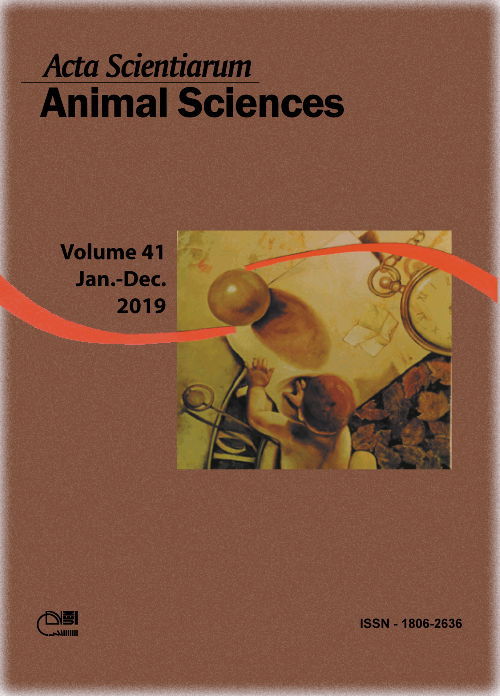Morphogenic, structural, productive and bromatological characteristics of Braquiária in silvopastoral system under nitrogen doses
Abstract
his study aimed to evaluate the effect of different doses of nitrogen fertilization on the morphogenic, structural, productive and chemical composition of Urochloa decumbens (Stapf) R. D. Webster cv. Basilisk in a silvopastoral system with eucalyptus. The experimental treatments consisted of pastures of Basilisk cultivar, fertilized with 0, 100, 200, 300 and 400 kg ha-1 year-1 of N, and intercropped with eucalyptus, clone GG 100 (Eucalyptus grandis x E. urophylla). The experimental arrangement followed a randomized block design with four replicates. The evaluated characteristics were: foliar appearance rate, phyllochron, leaf length, leaf elongation rate, leaf life span, foliar senescence rate, number of green leaves per tiller, number of senescent leaves per tiller, daily dry matter accumulation, dry matter production, crude protein, and neutral detergent fiber. In the conditions of the established silvopastoral system, nitrogen fertilization did not influence (p > 0.05) the morphogenic and structural characteristics of Basilisk cultivar, except for height (p < 0.01) and leaf: stem ratio (p = 0.02). The nitrogen fertilization of the Brachiaria grass with eucalyptus in the proposed structural arrangement does not modify (p > 0.05) the morphogenic characteristics. However, in ration to dry matter production, doses of up to 400 kg of N ha-1 are recommended.
Downloads
DECLARATION OF ORIGINALITY AND COPYRIGHTS
- I Declare that current article is original and has not been submitted for publication, in part or in whole, to any other national or international journal.
The copyrights belong exclusively to the authors. Published content is licensed under Creative Commons Attribution 4.0 (CC BY 4.0) guidelines, which allows sharing (copy and distribution of the material in any medium or format) and adaptation (remix, transform, and build upon the material) for any purpose, even commercially, under the terms of attribution.
Read this link for further information on how to use CC BY 4.0 properly.








































